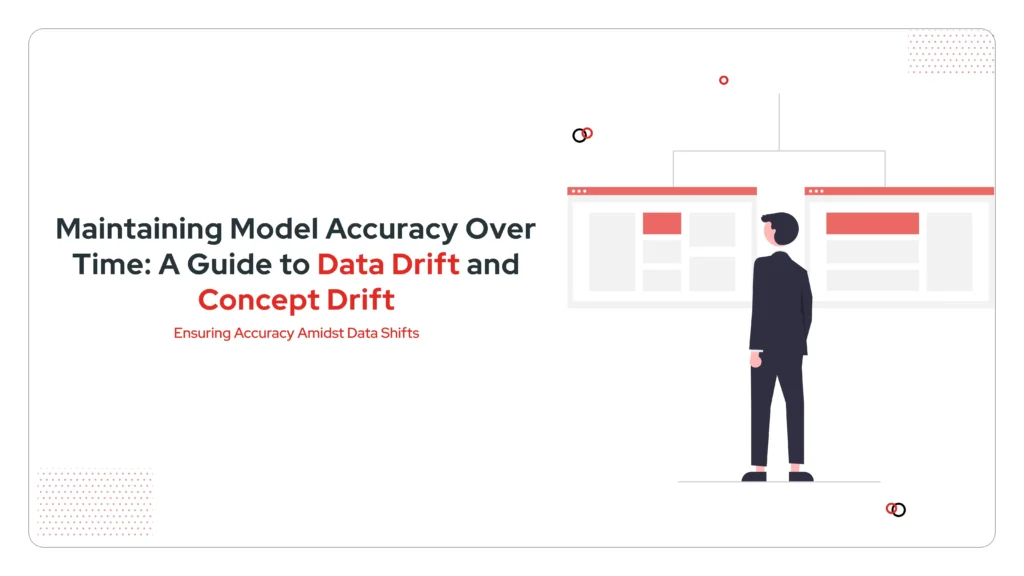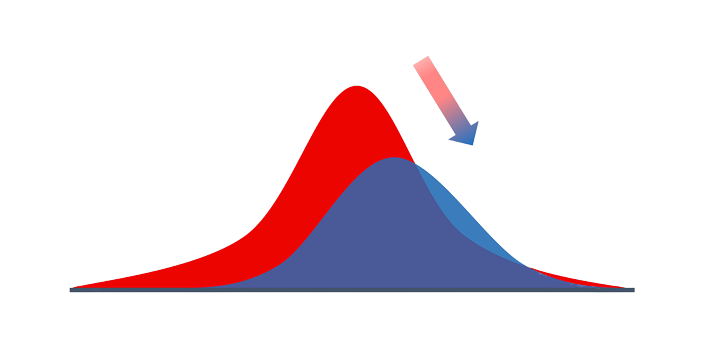
In the ever-evolving realm of machine learning, models are trained on historical data to make predictions about future events. However, the world is dynamic, and data distributions can change over time, leading to a decline in model performance. This phenomenon, often called “drift,” can manifest in two primary forms: data drift and concept drift.
Understanding Data Drift
Data drift refers to a gradual or sudden shift in the statistical properties of input data over time, meaning the distribution of features or variables in new data differs from the data used during the model’s training phase. This phenomenon is marked by several key characteristics. First, there is a change in the input distribution, where the underlying patterns of the input feature shift, challenging the model’s original assumptions.
Despite this shift, the decision boundary, or the relationship between input features and target variables, remains stable. Data drift often arises due to internal factors, including modifications in data collection methods, preprocessing techniques, or sampling approaches.

Real-world Example of Data Drift
Consider a model trained to predict customer churn for a telecommunications company. The customer demographics and usage patterns may change if the company introduces a new pricing plan or marketing campaign. This shift in input data distribution can lead to a decline in the model’s predictive accuracy.
Techniques for Detecting Data Drift
- Visualization Techniques
Histograms effectively illustrate the distribution of individual features, while box plots allow for a comparative analysis of feature distributions across various periods. Scatter plots help in identifying shifts in relationships between different features over time.
Statistical Tests
Statistical tests are crucial for data drift detection, with each serving distinct purposes. The Kolmogorov-Smirnov test assesses the differences between the cumulative distribution functions of two samples, while the Chi-squared test evaluates the independence of categorical variables. Additionally, the t-test compares the means of two samples to determine if they significantly differ from one another.

Machine Learning-based Methods
Machine learning techniques play a vital role in data drift detection, particularly through methods such as anomaly detection, which identifies data points that significantly diverge from established patterns, and change point detection, which recognizes moments in time when the data distribution shifts abruptly.
Strategies for Mitigating Data Drift
- Retraining the Model
Periodically retraining the model with updated data can help it adapt to changing data distributions.
- Data Quality Assurance
Ensuring data quality and consistency can minimize the impact of data drift.
- Adaptive Learning
Incorporating techniques like online learning and transfer learning can enable the model to learn from new data continuously.
- Drift Detection and Alert Systems
Implementing robust monitoring systems can proactively identify and address data drift.
Understanding Concept Drift
Concept drift refers to a situation where the fundamental relationship between input features and the target variable shifts over time, rendering the decision boundary established during the model’s training outdated. This evolution in the relationship signifies that the model may no longer perform accurately in predicting outcomes.
Concept drift is characterized by significant shifts in the decision boundary, indicating altered correlations between input features and the target variable. It often arises from external influences like changing economic conditions, technological advancements, or evolving consumer behaviors, and can be more difficult to detect than data drift due to its subtle nature.

Real-world Example of Concept Drift
Consider a model trained to predict customer sentiment from social media posts. If a new social media platform emerges or a significant event changes public opinion, the way people express their sentiments may evolve. This shift in the underlying relationship between the text of the posts and the sentiment can lead to a decline in the model’s accuracy.
Techniques for Detecting Concept Drift
- Performance Monitoring
Regularly track and analyze the model’s performance metrics to spot any notable declines or anomalies that may indicate concept drift.
- Concept Drift Detection Algorithms
Utilize advanced algorithms specifically created to recognize shifts in the data-generating process, ensuring timely adaptation to changing patterns.
- Human Expertise
Engage domain experts who can offer critical insights and contextual understanding of possible changes in underlying concepts, enhancing the detection process.
Strategies for Mitigating Concept Drift
- Continuous Learning
Implement mechanisms for the model to learn from new data and adapt to changing concepts.
- Active Learning
Prioritize data collection for areas where the model is uncertain or performing poorly.
- Ensemble Methods
Combine multiple models to improve robustness and reduce the impact of concept drift.

- Regular Model Retraining
Periodically retrain the model with updated data to capture new patterns.
Why Drift Detection and Mitigation Matter
A comprehensive approach to maintaining model performance involves combining techniques for detecting both data and concept drift. By monitoring both the statistical properties of the data and the underlying relationships between features and the target variable, you can proactively address issues that may arise over time.
Final Thoughts!
Data drift and concept drift are two critical challenges that machine learning practitioners must address to ensure the long-term success of their models. By staying vigilant, employing robust monitoring techniques, and implementing adaptive learning strategies, organizations can navigate the shifting sands of data and maintain the relevance of their AI solutions.